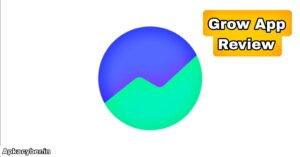
1. Introduction
Grow (often known as Grow.com) is a cloud-based business intelligence (BI) platform designed to make data analysis accessible for small and medium-sized teams. With its focus on ease of use and mobile access, Grow offers a way for businesses to turn complex data into clear, actionable dashboards—without needing a data science background.
Its web and mobile applications enable organizations to monitor KPIs, track progress in real-time, and stay on top of business performance from anywhere. Whether you’re a manager on the move or a team member tracking marketing metrics, Grow provides a convenient, low-barrier entry into data visualization.
This review explores Grow’s functionality, mobile experience, pros and cons, pricing, and how it compares to other BI tools.

2. Main Features
A. Dashboard Building and Visualization
Grow simplifies the process of building custom dashboards. Its intuitive drag-and-drop interface allows users to create visual reports using widgets such as charts, graphs, tables, and gauges—without needing to write code.
Calculated fields, filters, and drill-downs help users go beyond surface-level insights, making dashboards dynamic and interactive. The platform is especially useful for non-technical users who need quick visibility into performance metrics.
B. Data Integrations
One of Grow’s strongest features is its connectivity. The platform offers over 40 built-in integrations with popular services like Salesforce, HubSpot, QuickBooks, Google Ads, Shopify, and many others.
These integrations allow data to be automatically imported and updated across multiple dashboards, reducing the need for manual input. This helps ensure decisions are based on live, up-to-date information.
C. Live Data Refresh
Dashboards in Grow update automatically, with the option for manual refreshes when needed. This real-time syncing ensures that your reports always reflect the most recent data—critical for time-sensitive decisions.
D. User-Friendly Design
Grow was built with simplicity in mind. The clean layout and visual builder make it easy to design and share dashboards with your team. Even those unfamiliar with BI tools can quickly learn to navigate the platform.
E. Mobile Application
Grow’s mobile app allows users to access dashboards on the go. It mirrors the desktop functionality and supports drill-down actions, data refreshes, and interaction with visualizations—making it a useful companion for field teams or remote managers.
F. Support and Documentation
Customer support receives consistently high marks. Live chat, onboarding assistance, and an extensive knowledge base make it easier for new users to get started and troubleshoot issues as they arise.

3. What Users Love (and Don’t)
Pros
-
Ease of Use
Users regularly praise Grow’s straightforward interface. No technical skills are required to set up dashboards or interpret results, which makes it appealing for marketing teams, executives, and small business owners. -
Fast Setup
Many businesses report being able to get up and running in just days or weeks. Compared to other BI tools with lengthy deployment phases, Grow offers quick wins. -
Value for Money
For small businesses or startups, Grow offers substantial functionality at a reasonable price point. Users mention it’s a strong alternative to more expensive platforms like Tableau or Looker. -
Excellent Support
Customer support is cited as a major strength. Users describe the team as responsive, friendly, and open to feature requests or feedback. -
Mobile Access
The mobile app is well-designed, enabling team members to monitor metrics even when they’re away from their desks.
Cons
-
Limited Design Flexibility
Advanced users may find Grow lacking when it comes to customization. Options for layout control, advanced visuals, or embedded scripting are more limited than in high-end BI tools. -
Occasional Technical Glitches
Some users have reported bugs like missing widgets or dashboard elements not updating correctly. These are often addressed quickly but can still disrupt reporting workflows. -
Support for Complex Metrics
While great for standard KPIs, Grow can struggle with more complex queries or relationships between datasets—especially for users who need multi-layered, SQL-based dashboards. -
Scalability
For larger teams or organizations with extensive BI needs, Grow might hit a ceiling. It’s ideal for straightforward reporting but less suited to enterprise-scale analytics.

4. Pricing and Return on Investment
Grow doesn’t publicly list its pricing, as costs depend on the size of your team and features you need. Generally, it falls into the mid-range of BI solutions—more expensive than free tools like Google Looker Studio, but cheaper than enterprise solutions like Domo or Tableau.
Users report seeing a return on investment within 12–18 months. Because of the ease of implementation and quick access to data, many teams begin seeing productivity gains almost immediately.
Grow offers tiered plans:
-
Free trial: Available for testing the platform.
-
Standard Plans: Ideal for small teams needing 5–10 dashboards.
-
Enterprise: Customized for organizations with many users, integrations, and data sources.
5. The Mobile App Experience
Grow’s mobile app is available on both iOS and Android and offers nearly full functionality. Users can:
-
View and interact with dashboards
-
Refresh metrics with a tap
-
Use filters and drill-downs
-
Scroll through multiple views and metrics
For managers or team leads who are constantly traveling or in meetings, this real-time access is invaluable. The app is lightweight, responsive, and easy to navigate. However, complex dashboards with many elements might not display as cleanly on smaller screens.
Minor bugs have been reported in some app store reviews—typically around layout alignment or refresh delays—but these seem to be the exception, not the norm.
6. Grow vs. Other BI Platforms
Here’s how Grow stacks up against some competitors:
| Tool | Strengths of Grow | Where Others May Excel |
|---|---|---|
| Tableau | Easier to use, faster deployment | Tableau offers deeper customization and visuals |
| Power BI | Lower learning curve | Power BI has broader functionality and tighter Microsoft integration |
| Looker | More affordable and agile | Looker excels in complex modeling and embedded analytics |
| Klipfolio | Similar in approach | Klipfolio offers more design control |
| Google Data Studio | Simple and free | Lacks Grow’s automation and support |
If you need rapid insights and want a system that your entire team can adopt quickly, Grow is a strong choice. For data teams building out custom analytics layers, more technical tools may be a better fit.
7. Who Should Use Grow
Best For:
-
Startups and SMBs with limited BI resources
-
Marketing and sales teams looking to track KPIs
-
Executives needing dashboards on mobile
-
Companies using tools like HubSpot, QuickBooks, Shopify, or Google Ads
Less Ideal For:
-
Large enterprises with hundreds of users and datasets
-
Teams needing full control over visual design
-
Analysts requiring SQL scripting or embedded analytics
8. Strengths and Weaknesses at a Glance
What’s Great:
-
Extremely user-friendly
-
Quick implementation
-
Effective mobile experience
-
Real-time dashboards
-
Solid customer support
Where It Falls Short:
-
Limited visual customization
-
Occasional bugs
-
Not suited for advanced BI scenarios
-
May not scale to enterprise needs
9. Final Thoughts
Grow is a great option for businesses that want to become more data-driven without the cost or complexity of traditional BI tools. It delivers fast insights, intuitive dashboards, and strong customer support in a clean and accessible package.
While it lacks the advanced features of Tableau or Power BI, Grow makes up for it by being simple, responsive, and practical. It’s best suited for teams that prioritize speed, accessibility, and mobile-friendly data visibility.
If your team doesn’t have a dedicated BI expert and needs a no-code, ready-to-go solution, Grow is well worth trying.
10. Pro Tips for New Users
-
Define your top metrics early: Don’t try to track everything. Focus on your 3–5 most important KPIs.
-
Start with templates: Grow offers prebuilt dashboard templates for common use cases.
-
Test your mobile layouts: Check how dashboards display on smaller screens to ensure usability.
-
Use data snapshots: Lock in key visuals at moments in time to reference during reporting or meetings.
-
Engage with support: Their team is responsive—use them during setup or to troubleshoot any bugs.
11. Quotes from Real Users
“Very easy to set up multiple views targeting specific data without having to write a line of code.”
“I love the visibility Grow provides—affordable, practical, and easy to understand.”
“There are limits to what you can customize, but the value is undeniable.”
“Support is fast and friendly, and they actually listen to user feedback.”